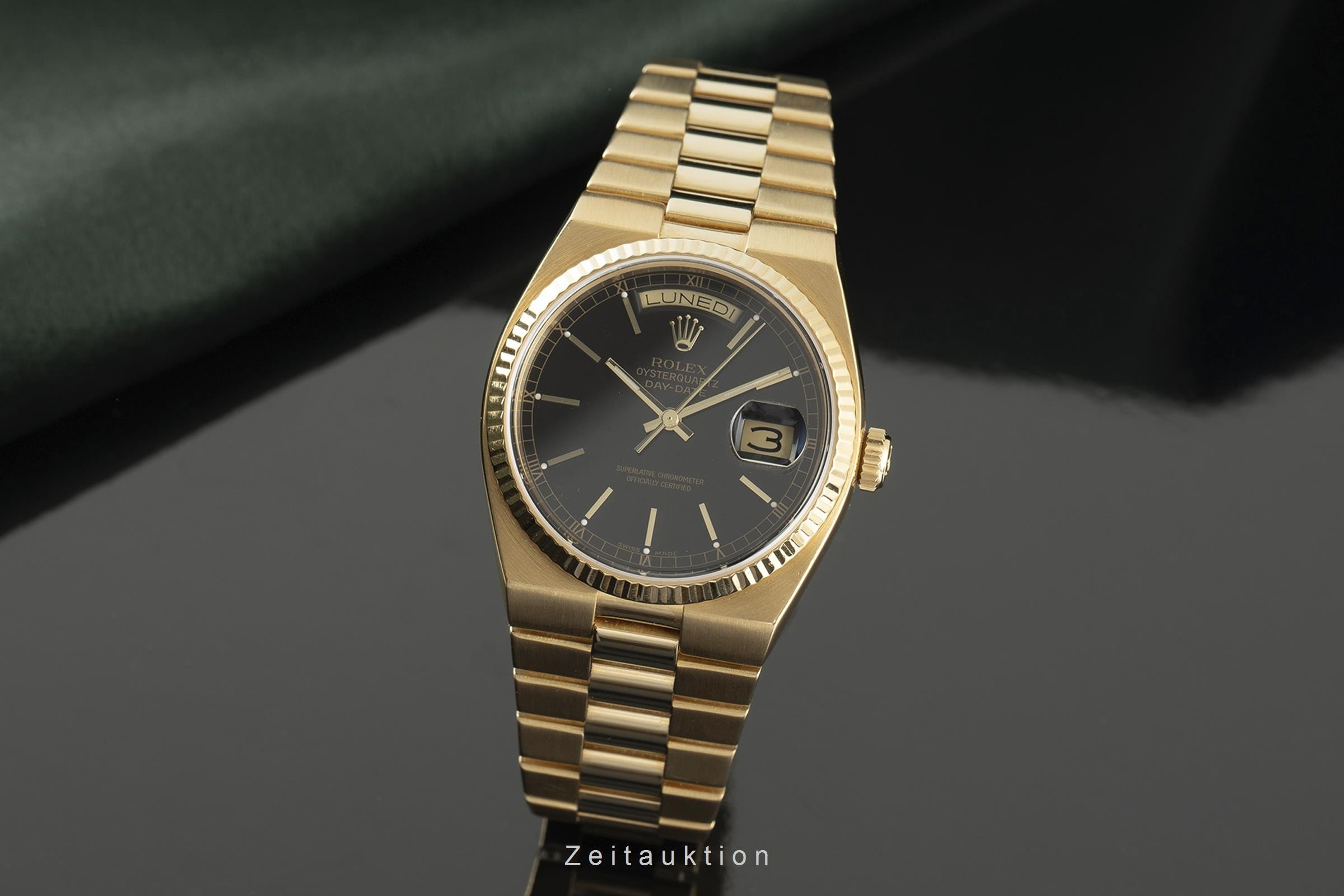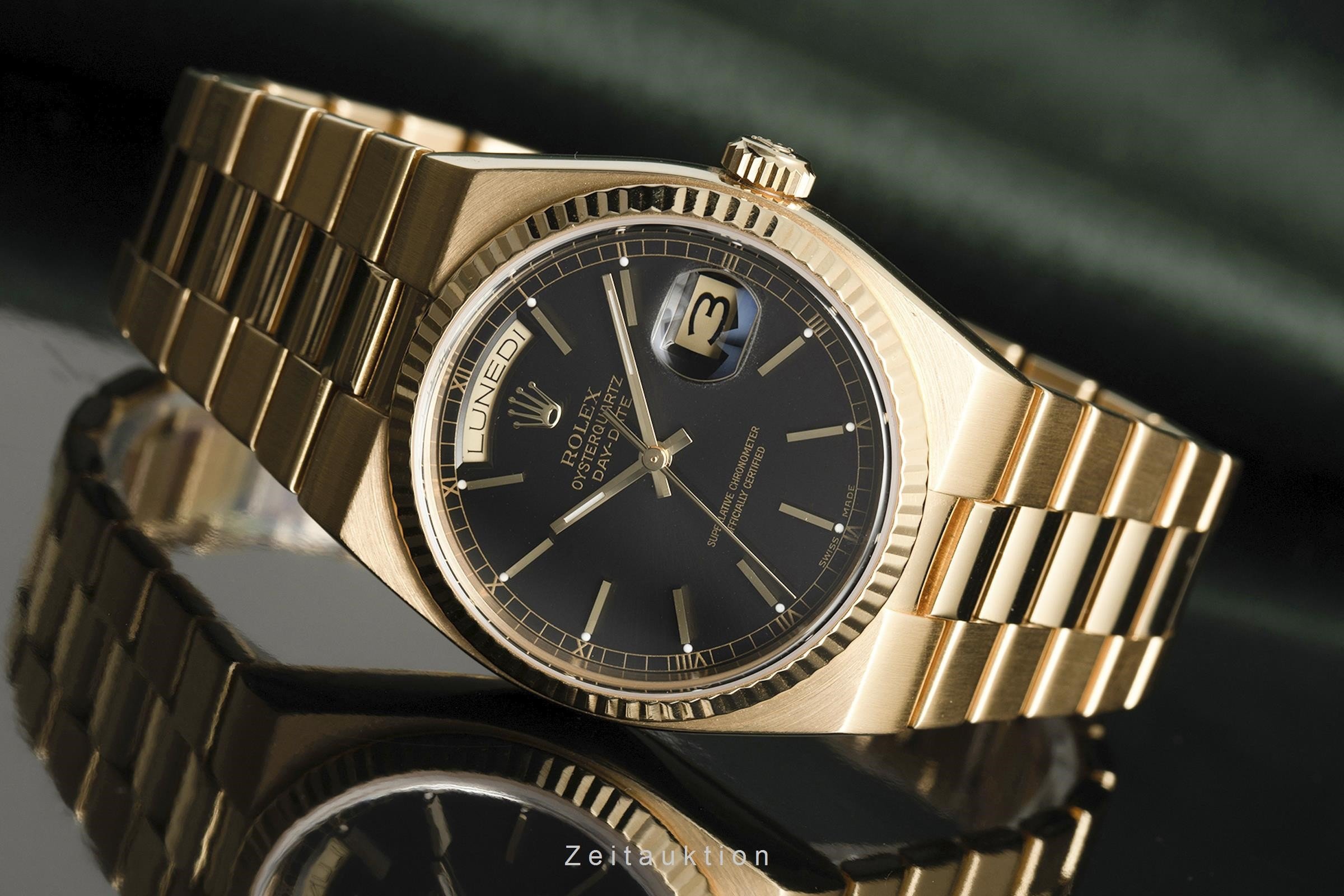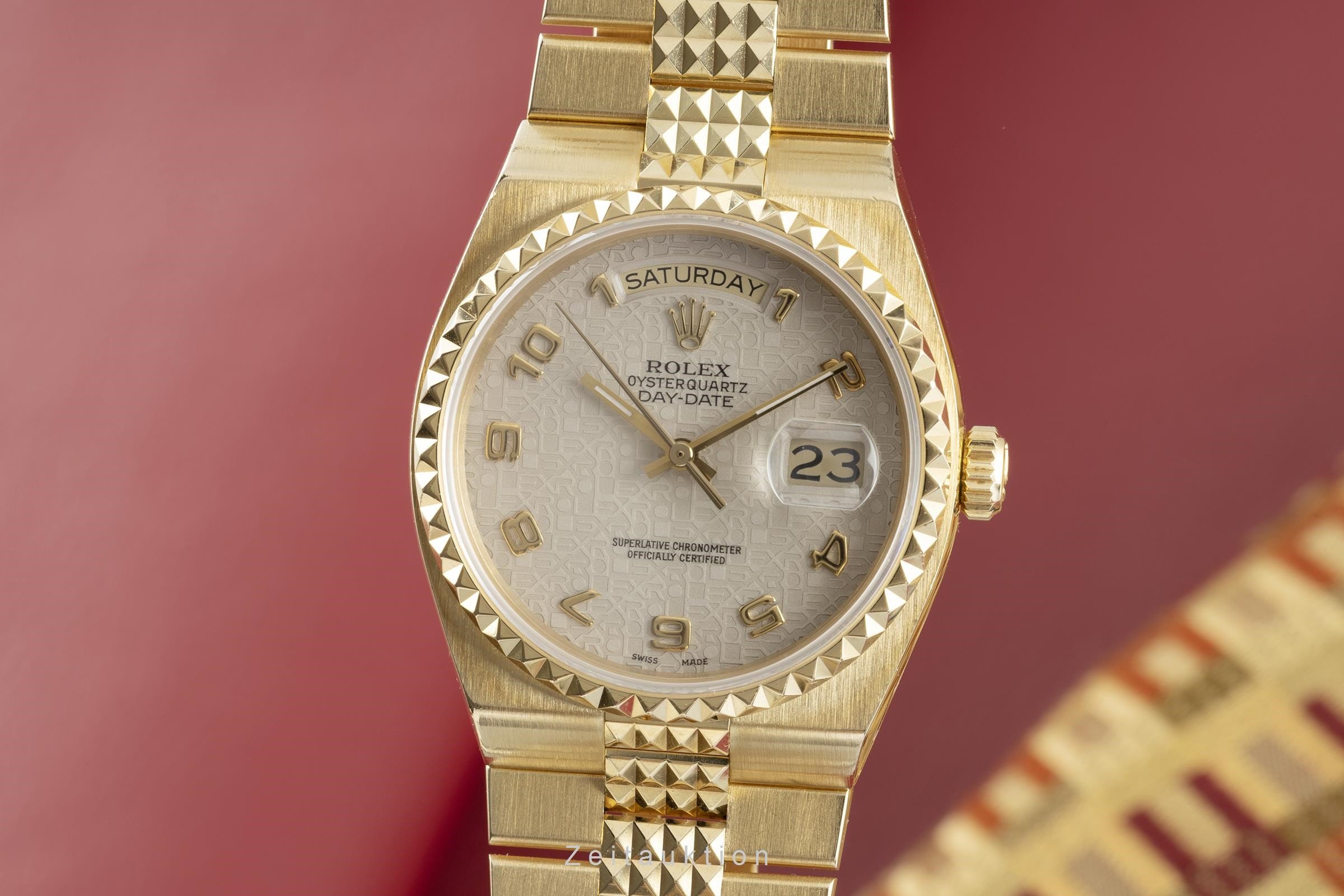Would You Spend €15K On A Gold Rolex Day-Date With A Quartz Movement?
One of the well-intentioned tips I received as a beginner watch collector was that quartz watches do not have a soul. A brand like Blancpain actively advertising that it never made a quartz watch and never will do so fueled the sentiment that quartz watches were not interesting for the real watch collector.
When I looked at a Rolex Oysterquartz for the first time, it left me a bit puzzled. The shape was right up my alley, but I couldn’t grasp why Rolex decided to use a quartz movement inside such an expensive watch. Though there wasn’t much on the internet in those days, after some research, I found some images of the movement used in the Oysterquartz Day-Date, Rolex caliber 5055. The quartz 5035 (Datejust) and 5055 (Day-Date) movements look beautiful, and perhaps even nicer than some of the third-party mechanical movements out there. Rolex applied the Geneva waves and gold-filled engraving on the bridges of the movement. The movement also produces this loud and characteristic ticking sound. This is due to the pallet fork that sets the pallet wheel into motion. What you hear is the pallets engaging with the wheel.
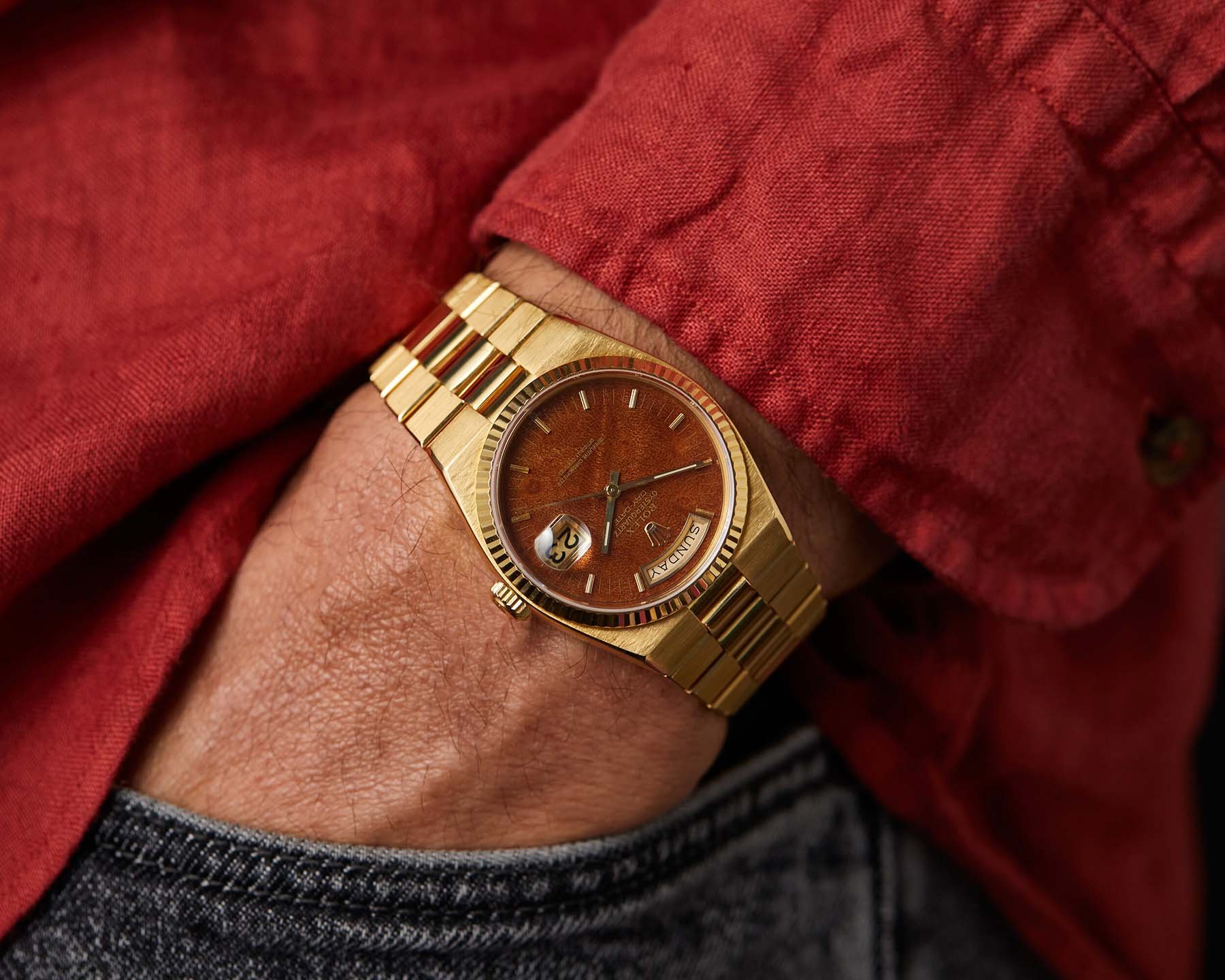
Oysterquartz Day-Date 19018. Image via WatchesLondon.com
The Rolex Oysterquartz Day-Date
Rolex introduced its Oysterquartz collection in 1977, after having had a Beta 21-powered watch with reference 5100. The Oysterquartz Day-Date and Datejust were in production until 2003. I have a Rolex catalog in front of me that dates back to 2002. This catalog includes the Oysterquartz family of watches. The Rolex Oysterquartz Day-Date ref. 19018 had a list price of €14,630 and the white gold ref. 19019 was priced at €16,306.
The 36mm diameter case has an integrated bracelet, much like a Royal Oak or an Ingenieur. One could even suspect Genta had a hand in this watch, though, as Brandon indicated in his recent Oysterquartz article, he did not. I used to own an Oysterquartz 17013 at some point in the early 2000s (one from 1977, with a so-called “single-line dial”). It is an amazing 36mm watch that I ended up letting go to a family member who showed a great interest in it.
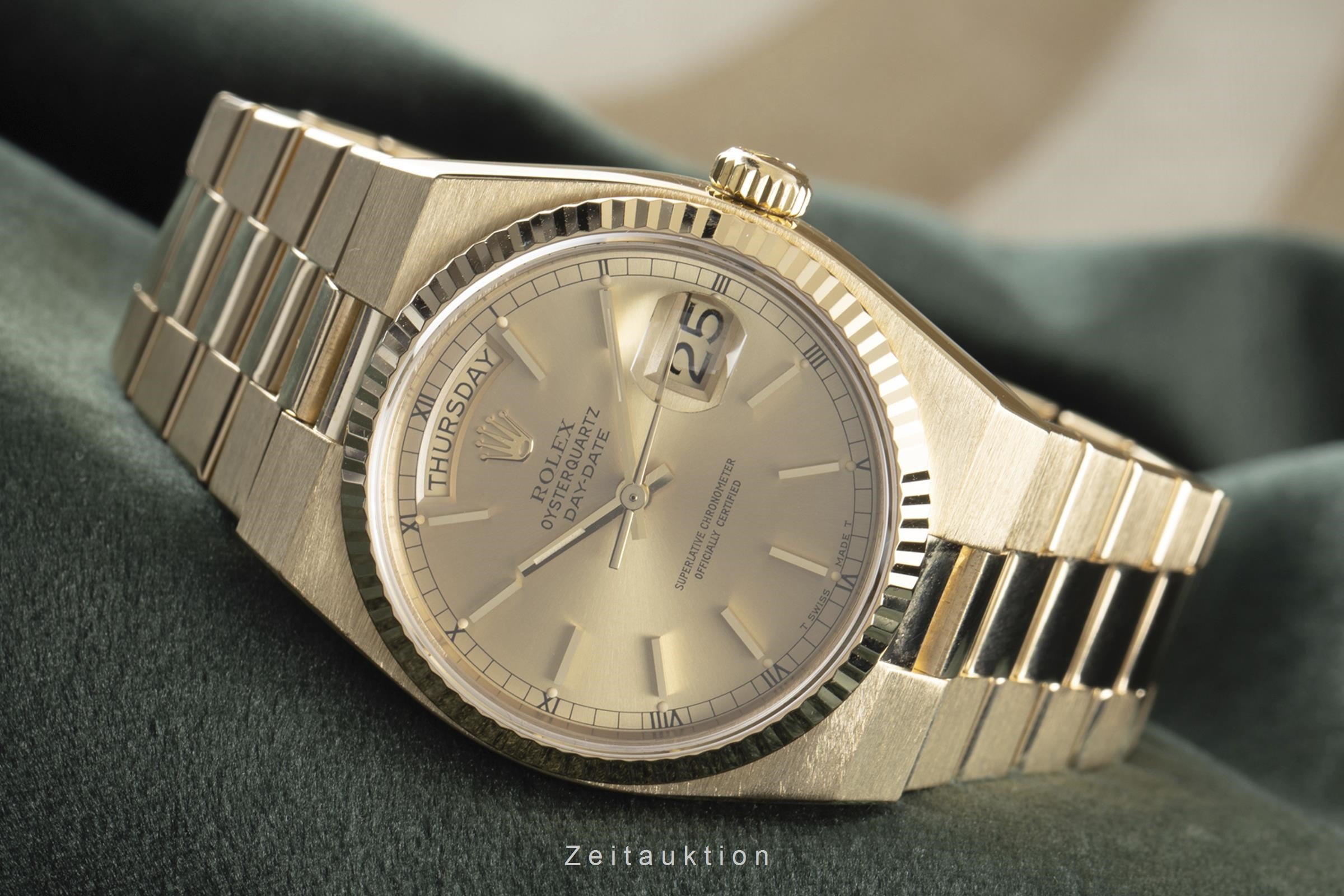
Image via ZeitAuktion
References 19018 and 19019
The Oysterquartz models that are interesting to me at the moment are the Day-Date refs. 19018 in yellow gold and 19019 in white gold. The white gold Rolex Oysterquartz Day-Date seems to be rare and much more expensive than an Oysterquartz Day-Date 19018. A yellow gold Oysterquartz Day-Date has a market value between €13,000 and €20,000, which is lower than a mechanical Rolex Day-Date 18038 or 18238 from the same era as the Oysterquartz. I don’t think the Oysterquartz Day-Date should be seen as an alternative for the Day-Date 18038 or 18238, as the shape is quite specific, and in the end, it has a very different movement. If you want a Day-Date 180x/180xx/182xx/etc, you should go for that one. Otherwise, you’ll find yourself lusting after one of those anyway.
Day-Date variations
However, if you love the characteristics of this special Rolex quartz movement and the integrated design of the Oysterquartz models, these watches are worth investigating. There are many dial variations out there, from champagne, black, and white to those with a burl-wood pattern and vignettes. The exclusivity of the dial does play an important part in the price it seems, but I think I’d prefer one with a champagne dial. In general, the white gold Oysterquartz models are more expensive and more difficult to find. But, in the end, I think it is the case and bracelet design that is the main attraction for owning a watch like the Oysterquartz Day-Date (or Datejust), as well as the specific quartz movement developed by Rolex.
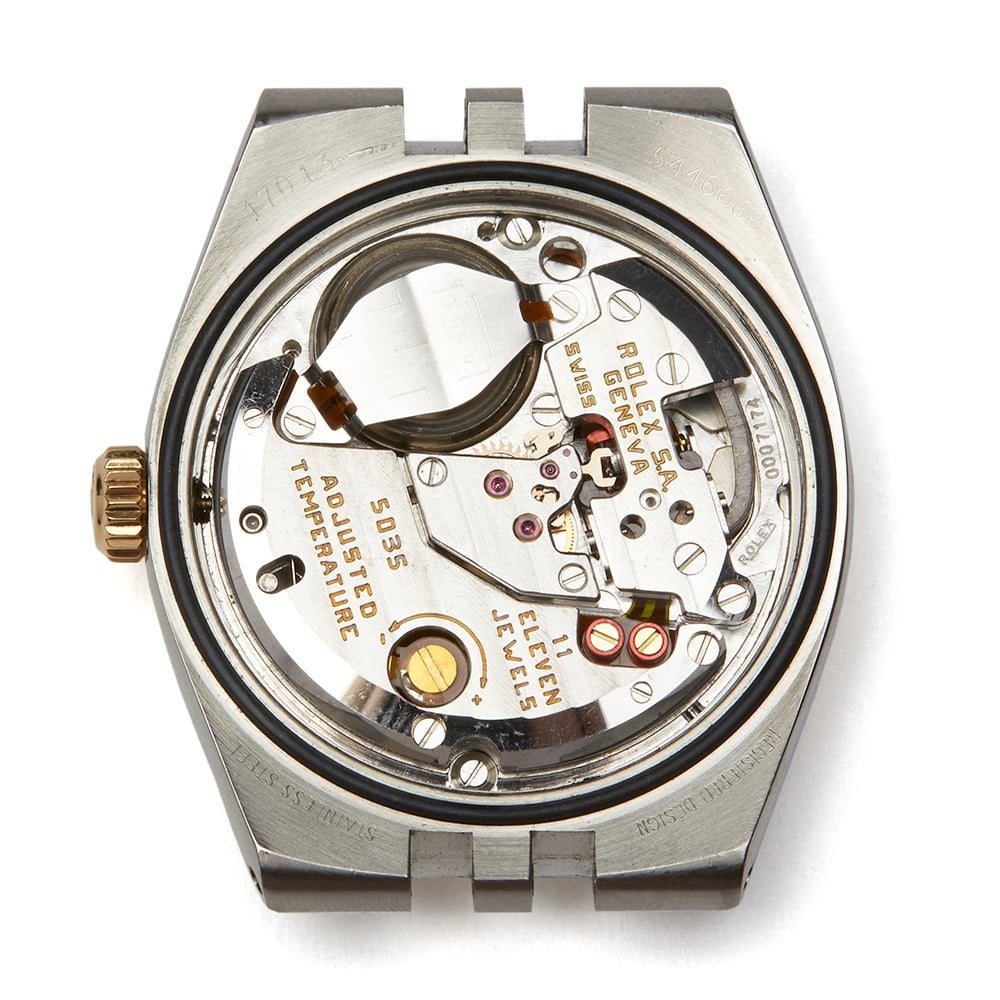
Oysterquartz Caliber 5035. Image via Xupes
A quartz watch can have a soul
I started this article by saying that I was told that quartz watches have no soul, but I’ve learned that this is not true. To me, at least, it doesn’t apply. As long as I have a personal connection to it, in my opinion, any watch can have a soul. There’s more to a watch than the movement anyway, but in this case, the Rolex quartz movement is quite something. It is not the replaceable cheap plastic quartz movement used in low-cost watches. The only thing that does worry me a bit is the serviceability of the Oysterquartz movement. You don’t want to hear from your Rolex Service Center that they can’t service your expensive full gold Day-Date anymore. On the other hand, these watches have been around for nearly 45 years, and watchmakers still accept them for repair and servicing. In the first years of production, the Oysterquartz watches were only water-resistant to 50 meters. Later on, this was changed to 100 meters of water resistance.
Famous Rolex Oysterquartz wearers
Would you feel comfortable spending around €15,000 on a quartz watch though? Quartz technology is perhaps less romantic than a mechanical movement, but this caliber 5055 (and 5035) by Rolex is definitely something else. Besides the movement, the value, of course, is also in the precious metal and, if we’re being honest, the Rolex brand name. As long as Rolex can service the movement, personally, I don’t see much of an issue. And last but not least, you also buy into some history here. On March 2nd, 2022, Sir Michael Caine’s 18K gold Rolex Oysterquartz Day-Date 19018 from 1980 will be auctioned by Bonhams. Other noteworthy Oysterquartz wearers are the recently deceased Bob Saget, mountain climber Reinhold Messner (he wore it when climbing Mt Everest in 1978), and Sir Edmund Hillary, who wore one later in life.
OysterQuartz Day-Date 19019 with diamond dial. Picture via Iconeek
Twelve references
I only covered the Oysterquartz Day-Date 19018 and 19019 here, but there are seven other references for the Day-Date with quartz movement. Most of the variations are in the use of baguettes, diamonds, and other stones on the dial, bezel, or bracelet. To me, an interesting variation is reference 19028, the “Pyramid”, whose bezel and center links have this Clous de Paris decoration.
In total, including the Rolex Oysterquartz Datejust models, there are 12 different references. It’s hard to believe that Rolex didn’t produce more than 25,000 Oysterquartz watches in total. For Rolex, that’s not a high number at all. If you don’t want to spend these amounts on a gold Oysterquartz reference, I might suggest taking a look at the plainest Oysterquartz, reference 17000. It is, in my opinion, besides the Day-Date models, the coolest Rolex Oysterquartz reference.
What do you think? Can quartz watches have a soul, and is a solid gold quartz Rolex worth €15K? Let us know in the comments below.
*Header image courtesy of ZeitAuktion

